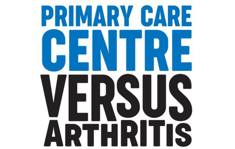Transforming gout care: How our research centre is changing the lives of people living with gout
26 March 2024
Gout is the most common type of inflammatory arthritis in the world, with 1.6 million people across the UK diagnosed with the condition.
But are they receiving the best care?
Join us as we discover how researchers at our Primary Care Centre have transformed healthcare for gout. Plus, learn how we're amplifying the voices of people living with gout, so their needs can be heard and met.
Discover the impact of our Primary Care Centre
What is gout?
Gout is a painful form of arthritis caused by having too much uric acid (also known as ‘urate in your blood’).
It’s completely normal to have urate in your blood. Urate is created every day when our bodies break down purines. Purines are chemicals that are naturally created in our body, but they are also present in certain foods.
But if your urate levels become too high it may cause gout.
“Your body can’t get rid of the uric acid, so it’s got to go somewhere,” explains Malcolm, 65, who lives with the condition.
“So, it starts to turn into lots of sharp, little crystals that build up around your joints and rub together. That’s why it’s so painful. To fix it, you’ve got to control your uric acid level. It’s that simple.”
To treat gout flares, you’ll be given urate lowering therapy. These are medicines, like allopurinol or febuxostat, that work by reducing the build-up of urate crystals in joints.
Gout is sometimes described as the only ‘curable’ form of arthritis because urate lowering therapies are so successful. But, despite this, many people live unnecessarily in pain.
How is the Primary Care Centre improving gout treatment?
The truth is there isn’t one straightforward way to improve gout care across the UK because everyone’s needs are different.
So, our researchers have worked tirelessly to improve gout care, every step of the way.
Download our Primary Care Centre report
Improving gout diagnosis
Getting diagnosed with a condition can stir up a rollercoaster of emotions. But we know that better understanding your diagnosis and talking to people who understand can make it feel less daunting.
Working together with people living with gout, our researchers helped to create online resources that show what it’s really like to live with gout.
Viewed around 4,000 times every month, they’re helping to give a voice to people living with gout.
Women living with gout pointed out how they’re rarely represented. So, our researchers also took care to shine a spotlight on their experiences.
Improving drug treatment
 Researchers at our Primary Care Centre have also transformed the way medicines are prescribed for gout.
Researchers at our Primary Care Centre have also transformed the way medicines are prescribed for gout.
Through their work, we now know that:
- Urate lowering therapy should be considered and discussed after your first gout flare.
- The anti-inflammatory medicine, naproxen, doesn’t provide better pain relief than low-dose colchicine for gout flares. But it has fewer side effects, so it should be the first suggested option if you’re having a gout flare.
Improving management of gout
 Researchers, such as Professor Christian Mallen, showed that gout is often poorly managed.
Researchers, such as Professor Christian Mallen, showed that gout is often poorly managed.
“My research was focused on identifying ‘missed opportunities’ to improve primary care management for people with musculoskeletal conditions,” said Professor Christian Mallen.
“I worked alongside Professor Edward Roddy to research ways to improve diagnosis, management and treatment for people living with gout. Our work informed policy and practice updates, including clinical guidelines that are still in effect today “
They learned that in 2012:
- Fewer than a third of people living with gout in the UK receive a prescription for urate lowering treatment within 12 months of diagnosis.
- Only 40% of gout patients follow their urate lowering therapy.
